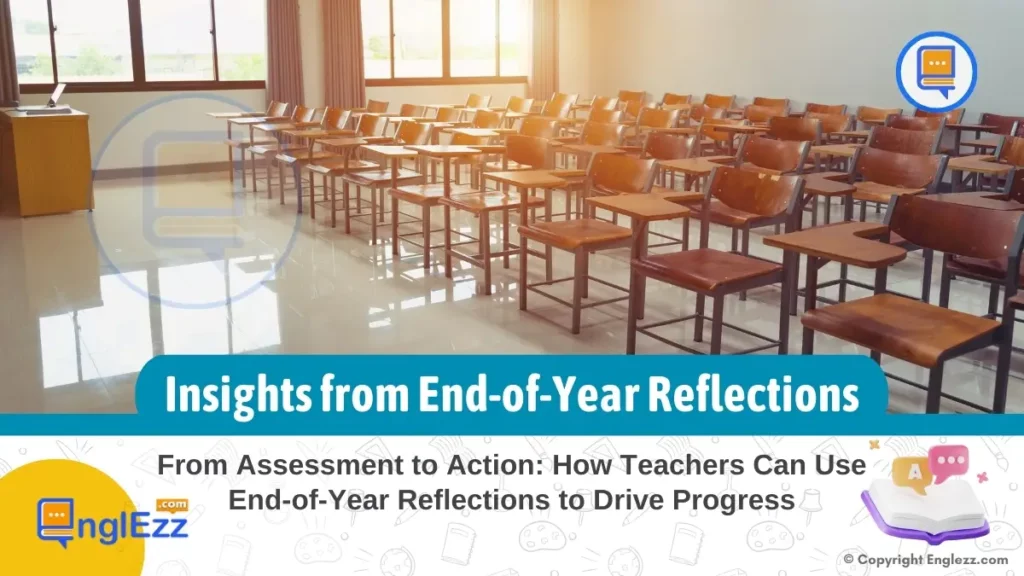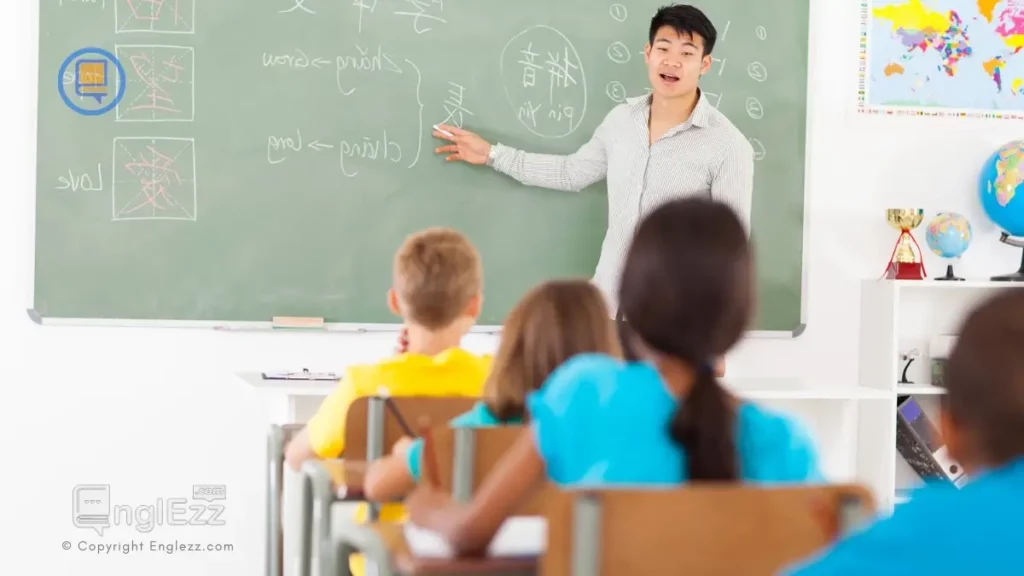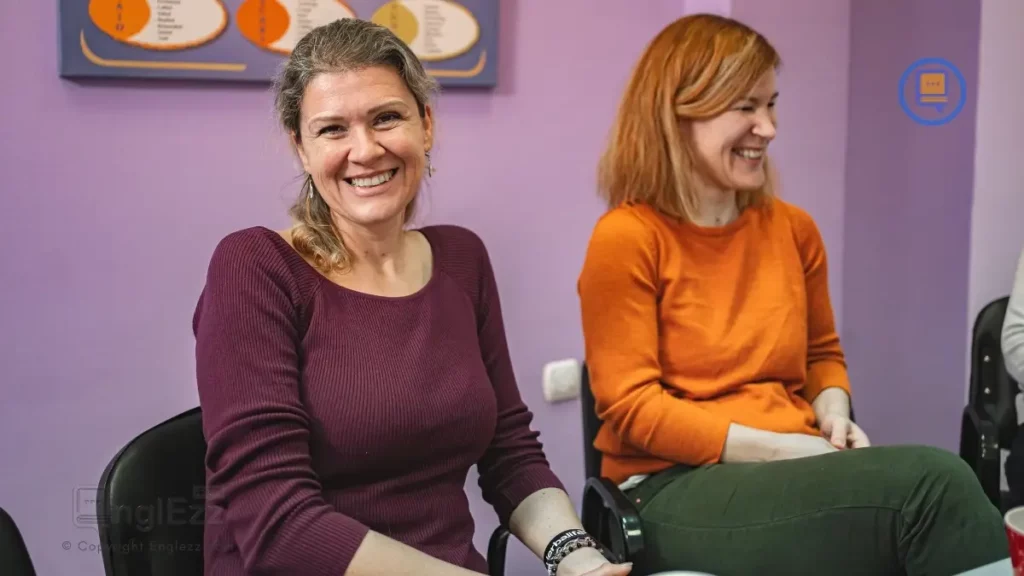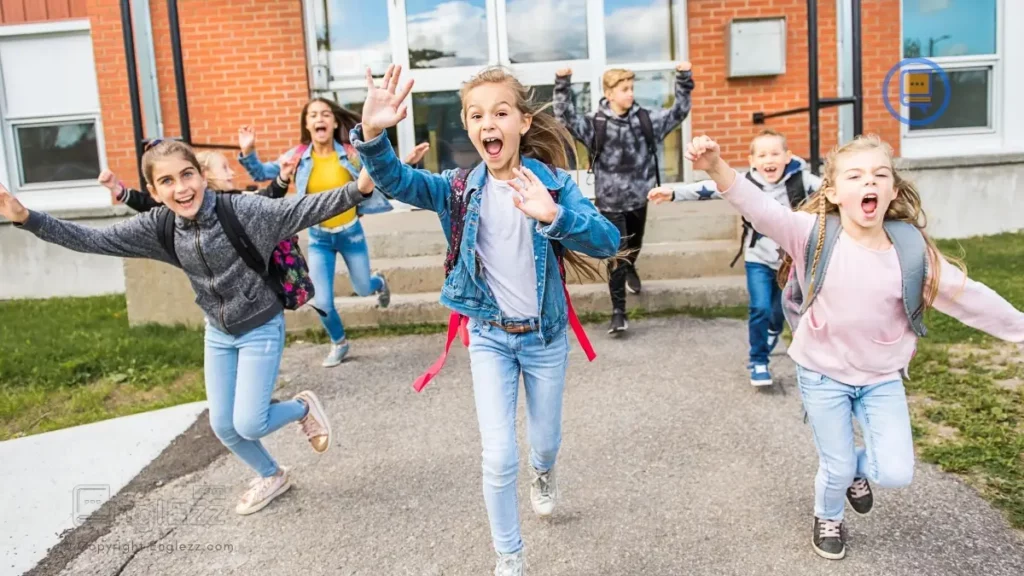Stepping into the realm of education is not merely a profession but a profound calling to shape young minds and pave the way for brighter futures. As another academic year draws to a close, teachers across the educational landscape stand at the threshold of introspection, armed with a powerful tool: end-of-year reflections. Learn how teachers can use end-of-year reflections to drive progress and inspire growth in their classrooms.
These reflective exercises hold the key to unlocking teaching potential, offering a panoramic view of successes, challenges, and uncharted territories waiting to be explored. In this guide, we delve into the art of reflection, illuminating its pivotal role in driving progress and nurturing professional growth.
Table of Contents
- How Teachers Can Use End-of-Year Reflections to Drive Progress
- Evaluating Curriculum Effectiveness
- Implementing Student Feedback
- Collaborating with peers
- Prioritizing personal well-being
- Embrace change and seek improvement
- Empowering Others Through Sharing Insights
- Taking Action Towards Transformational Growth
- Final Tips
- Driving Transformational Growth Through Reflection
- FAQs
- Q. How often should teachers engage in end-of-year reflections?
- Q. What are some practical ways to document reflections effectively?
- Q. How can educators overcome resistance to change when implementing reflection-based practices?
- Q. What role do school leaders play in supporting teachers’ reflective practices?
- Q. Can students benefit from teachers’ reflective processes?
How Teachers Can Use End-of-Year Reflections to Drive Progress
Embarking on this reflective journey unveils an array of insights that can transform mere assessments into actionable steps towards excellence. End-of-year reflections serve as a compass guiding educators through the labyrinth of their teaching experiences, shedding light on areas ripe for enhancement and celebration. By traversing this path intentionally and with an open heart, teachers gain unparalleled access to self-discovery and innovation, empowering them to sculpt their pedagogical identities with care and precision.

The significance of these reflective practices transcends mere evaluation; they become transformative vessels propelling educators towards new horizons of impact and efficacy in their noble craft. Join us as we unpack the significance of end-of-year reflections and embark on a journey towards unlocking your true teaching potential through 8 enlightening insights gleaned from deep introspection.
Evaluating Curriculum Effectiveness
As educators embrace the end of the academic year, assessing the effectiveness of implemented curricula stands as a pivotal step in enhancing teaching practices. By scrutinizing both successes and challenges encountered throughout the year, teachers gain valuable insights into what worked well and areas that require refinement. For instance, in a science classroom where students found hands-on experiments particularly engaging and informative, this success could inspire educators to incorporate more interactive activities in future lesson plans.
Conversely, if certain topics seemed to confuse students consistently, it signals an opportunity for teachers to re-evaluate their approach and tailor explanations to better meet student comprehension levels.
In addition to gauging qualitative feedback from classroom observations, analyzing student performance data provides concrete evidence of curriculum effectiveness. By examining assessment results, teachers can pinpoint specific areas where students excelled or struggled, guiding them in understanding where adjustments may be necessary.
For example, noticing a majority of students grasped algebraic concepts with ease but faced challenges with geometry questions can prompt educators to revise instructional strategies for geometry topics for greater clarity and comprehension. This data-driven approach ensures that modifications are targeted towards addressing students’ actual learning needs efficiently.

Moreover, turning lessons learned through curriculum evaluation into actionable strategies for the upcoming academic year sets the stage for impactful pedagogical transformations. By reframing past experiences as stepping stones towards improvement rather than viewing setbacks as failures, educators foster a growth-oriented mindset that fuels continuous enhancement of their teaching practice. This reflective process empowers teachers to proactively identify opportunities for innovation and refinement based on real-world feedback and experiences, laying a solid foundation for driving progress and unlocking their full teaching potential in the future.
Implementing Student Feedback
As teachers reflect on their past year’s performance, one crucial aspect to consider is the feedback received from their students. Gathering comprehensive feedback provides valuable insights into the effectiveness of teaching approaches and helps educators understand how students perceive their instruction. By creating channels for open communication, teachers can encourage students to provide constructive criticism that can be integrated into lesson planning and delivery strategies.
For example, a high school teacher might conduct anonymous surveys asking students about the clarity of instructions or the relevance of assignments. By incorporating this feedback when designing future lesson plans, teachers can ensure better engagement and understanding among their students.
Moreover, fostering a culture of open communication nurtures ongoing student engagement in the learning process. Students who feel heard and valued are more likely to actively participate in class discussions, ask questions, and seek help when needed. Teachers can facilitate this by holding regular feedback sessions or implementing peer evaluation activities where students can provide input on each other’s work.
This collaborative approach not only enhances the classroom environment but also empowers students to take ownership of their learning journey. For instance, an elementary school teacher could organize weekly reflection circles where students share what they enjoyed about the lessons and suggest improvements.

By acknowledging student feedback as a cornerstone of professional growth, educators demonstrate a commitment to continuous improvement and student-centered teaching practices. Embracing constructive criticism with an open mind allows teachers to evolve their pedagogical methods based on real-time input from those directly impacted by their teaching. Ultimately, integrating student feedback into lesson planning doesn’t just benefit individual teachers; it creates a dynamic feedback loop that fosters mutual respect between educators and learners while enriching the overall educational experience for everyone involved.
Collaborating with peers
Collaborating with peers in the field of education is a powerful strategy for teachers looking to enhance their pedagogical skills and drive progress. By sharing best practices, educators can tap into a rich pool of experience and expertise. For example, conducting peer observations where teachers visit each other’s classrooms can provide valuable insights into different teaching styles and techniques. Through constructive feedback sessions, teachers can learn from one another and adapt new strategies to improve student engagement and learning outcomes.
Moreover, building support networks within the educational community can offer much-needed encouragement and professional development opportunities. Teachers can participate in workshops, conferences, or online forums to connect with like-minded educators who share their passion for teaching. These networks serve as platforms for idea exchange, collaboration on projects, and ongoing mentorship relationships. By leveraging these connections, teachers not only expand their knowledge but also foster a sense of belonging within the larger educational landscape.
Collaborative projects present another avenue for innovative teaching methods co-created by educators working together towards common goals. For instance, interdisciplinary projects that involve multiple subject areas or cross-grade collaborations can enrich the learning experiences of students while providing teachers with fresh perspectives on curriculum design. By brainstorming ideas, pooling resources, and collectively problem-solving challenges, teachers can create dynamic learning environments that inspire creativity and critical thinking among students while boosting their own professional growth through collaborative efforts.
Prioritizing personal well-being
Prioritizing personal well-being as an educator is not just a luxury but a necessity for sustainable teaching excellence. Reflecting on work-life balance and stress management techniques throughout the year allows teachers to gauge their mental and emotional well-being, which directly impacts their effectiveness in the classroom. For example, creating designated time slots for self-care activities such as meditation, exercise, or pursuing hobbies can significantly contribute to reducing stress levels and fostering a positive mindset.
Setting boundaries is another crucial aspect of maintaining mental health and preventing burnout. Educators are often passionate about their work, which can lead to overcommitment and exhaustion. By clearly defining boundaries between work responsibilities and personal life, teachers can ensure they have time for relaxation, family, and other interests outside of the classroom. This deliberate separation helps in recharging energy reserves and returning to teaching roles with renewed vitality.
Integrating self-care practices into daily routines is key to sustaining long-term teaching excellence. Small rituals like taking short breaks during the school day to stretch or practice mindfulness exercises can make a significant difference in reducing stress levels. Additionally, prioritizing healthy eating habits, regular sleep schedules, and engaging in activities that promote relaxation are vital components of self-care that contribute to overall well-being. When educators prioritize themselves as individuals first, they set a positive example for students on the importance of self-care and holistic wellness strategies.
Embrace change and seek improvement
Embracing change and continuously seeking improvement are fundamental aspects of professional growth for educators. Cultivating a growth mindset allows teachers to view challenges as opportunities for personal and professional development. For instance, if a teacher faced difficulties with student engagement strategies during the previous academic year, they could approach this challenge with a growth mindset by researching innovative teaching methods, attending workshops on student motivation, or collaborating with colleagues to brainstorm creative solutions. By reframing setbacks as learning experiences, teachers can harness these moments to refine their pedagogical approach and enhance student learning outcomes.
Setting clear goals and developing actionable plans play a pivotal role in sustaining motivation throughout the year. Teachers can create long-term objectives such as improving class participation rates or incorporating more technology into lessons. Breaking down these goals into manageable steps allows educators to track progress and celebrate achievements along the way, providing continuous motivation and a sense of accomplishment. By regularly revisiting and adapting these action plans based on reflections from end-of-year assessments, teachers can stay focused on their professional development journey while maintaining momentum towards their desired outcomes.
Moreover, engaging in ongoing professional development opportunities is essential for staying current with educational trends and best practices. Attending conferences, online webinars, or joining specialized workshops not only exposes educators to new methodologies but also fosters a community of like-minded professionals who share insights and resources. For example, participating in webinars on inclusive teaching strategies may inspire teachers to implement more diverse instructional approaches that cater to all students’ needs effectively. This commitment to continuous learning ensures that teachers remain adaptable in an ever-evolving educational landscape, preparing them to meet the diverse needs of 21st-century learners effectively.
Empowering Others Through Sharing Insights
As experienced educators, it is crucial to pay it forward by mentoring new teachers and sharing the practices that have proven successful through reflection-based strategies. By guiding newer colleagues on how to leverage end-of-year reflections effectively, seasoned teachers can inspire a culture of growth and development within the educational community.
One example of this mentorship could involve creating structured sessions where new teachers are encouraged to reflect on their teaching methodologies and set actionable goals derived from these insights. This approach not only supports novice educators in honing their skills but also reinforces the importance of self-reflection as a continuous practice in professional growth.

Moreover, sharing success stories with school administrators serves as a powerful driver for systemic change within educational institutions. When educators highlight the positive outcomes resulting from reflective practices, administrators are more inclined to support and promote such initiatives across the faculty. For instance, showcasing how collaborative reflection led to significant improvements in student engagement and learning outcomes can demonstrate the tangible impact of investing in end-of-year reflections as a tool for teacher development.
These success stories can ignite a ripple effect, encouraging broader adoption of reflective practices school-wide.
In addition to one-on-one mentorship and advocacy at administrative levels, establishing peer learning communities can further enhance the impact of end-of-year reflections. By coming together with fellow educators to share experiences, challenges, and resources, teachers create a supportive network that fosters continuous learning and collaboration.
Peer learning communities provide a platform for exchanging innovative teaching methods, receiving constructive feedback, and jointly developing solutions to common classroom issues. Through these communities, educators can collectively strive for excellence by leveraging each other’s strengths and areas for improvement based on reflective insights gained throughout the year.
Taking Action Towards Transformational Growth
As the academic year draws to a close, it is crucial for educators to leverage the insights gained from end-of-year reflections to propel their professional growth. One pivotal aspect of this process involves updating professional goals based on the outcomes of self-assessment and student feedback. For instance, a science teacher reflecting on the challenges faced in engaging students during practical sessions might set a goal to incorporate more hands-on activities in the upcoming year. By aligning goals with reflection outcomes, teachers can tailor their professional development journey to address specific areas needing improvement.
Transitioning from reflection to action requires concrete steps towards implementing changes in teaching practice. Educators can create detailed action plans that outline strategies for addressing identified weaknesses and capitalizing on strengths discovered throughout the reflective process. For instance, a language arts teacher who noticed a lack of vocabulary enrichment in lesson plans could commit to integrating daily word-building exercises into future curriculum designs. It is through the diligent execution of these actionable steps that lasting transformations in teaching efficacy can be realized.
Celebrating progress made during reflection and actively acknowledging achievements is paramount in sustaining motivation and fostering continuous improvement. By recognizing milestones achieved – whether they are small victories like improved student engagement or larger accomplishments such as successfully piloting innovative teaching methods – educators can stay inspired and energized for future endeavors. Harnessing this momentum allows teachers to approach each new academic year with renewed enthusiasm, armed with valuable insights garnered from prior reflections and fortified by a commitment to growth and excellence in education.
Final Tips
As educators wrap up the academic year and embark on a journey of self-reflection, here are three short tips to leverage end-of-year reflections for personal and professional growth. Firstly, consider creating a personalized professional development plan based on the insights gained from your reflections. By setting specific and achievable goals, such as improving classroom management techniques or exploring new instructional strategies, you can direct your focus towards areas that will drive significant progress in your teaching practice.
Secondly, don’t underestimate the power of seeking feedback from peers or mentor teachers. Engaging in constructive dialogue with colleagues allows for a collaborative exchange of ideas and experiences that can enrich your teaching methods. For instance, participating in a lesson study with fellow educators can provide valuable perspectives on effective instructional approaches and offer innovative solutions to common challenges faced in the classroom.
Lastly, maintain a growth mindset by embracing change and embracing continuous learning opportunities. Stay curious about emerging educational trends and pedagogical research to stay at the forefront of best practices in education. Consider attending workshops, conferences, or online courses to expand your knowledge base and enhance your teaching repertoire. By remaining adaptable and open-minded, you’ll be well-equipped to navigate evolving educational landscapes with confidence and competence.
Driving Transformational Growth Through Reflection
As we conclude our exploration of how teachers can leverage end-of-year reflections to propel their professional growth and unlock their teaching potential, one key takeaway resonates profoundly—the power of reflection as a catalyst for positive change. By taking the time to evaluate past experiences, identify areas for improvement, and set actionable goals, educators can embark on a journey of continuous self-improvement and instructional enhancement.
End-of-year reflections not only provide valuable insights into curriculum effectiveness, student feedback incorporation, collaboration with peers, well-being prioritization, embracing change, and empowering others but also serve as a roadmap for transformative growth in the educational landscape.
In the spirit of lifelong learning and building vibrant communities of practice, let us embrace reflection not just as an annual ritual but as a daily habit that fuels our passion for teaching excellence. By harnessing the collective wisdom shared in this narrative—from reimagining lessons based on past successes and challenges to championing resilience through self-care practices—we empower ourselves to become agents of change in our classrooms and beyond.
Let each reflection mark not an endpoint but a new beginning—an opportunity to learn, grow, innovate, and inspire the next generation of learners with unwavering dedication to educational progress.
FAQs
Q. How often should teachers engage in end-of-year reflections?
Teachers are encouraged to reflect at the end of each academic year or semester. However, periodic reflections throughout the year can also be beneficial for ongoing growth.
Q. What are some practical ways to document reflections effectively?
Utilizing journals or digital tools like blogs or reflective journals can help teachers organize their thoughts and track their progress over time.
Q. How can educators overcome resistance to change when implementing reflection-based practices?
Engaging in professional development opportunities focused on reflection techniques and highlighting success stories resulting from reflective practices can help alleviate resistance among educators.
Q. What role do school leaders play in supporting teachers’ reflective practices?
School administrators can foster a culture of reflection by providing resources for professional development related to reflective practices and recognizing teachers who demonstrate growth through reflection.
Q. Can students benefit from teachers’ reflective processes?
Involving students in the feedback process and demonstrating vulnerability by sharing reflections with them can enhance classroom relationships and create a more inclusive learning environment based on open communication.
Let us continue to cultivate reflective habits that drive us towards excellence one introspective step at a time – transforming challenges into opportunities for growth, celebrating progress as a community united by purposeful action, paving the way for brighter educational horizons filled with innovation and inspired impact.
